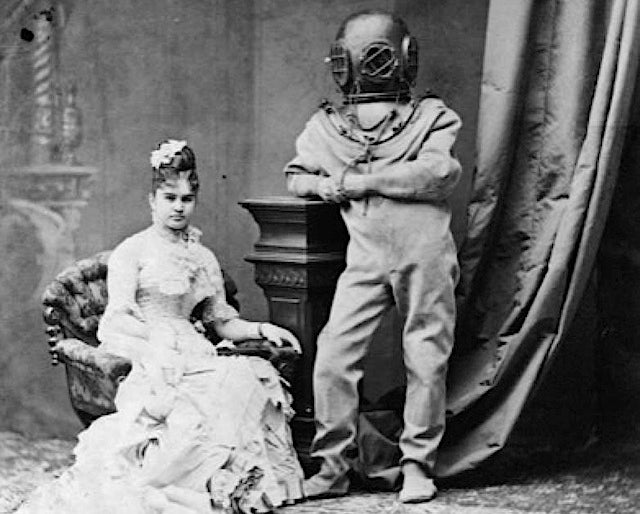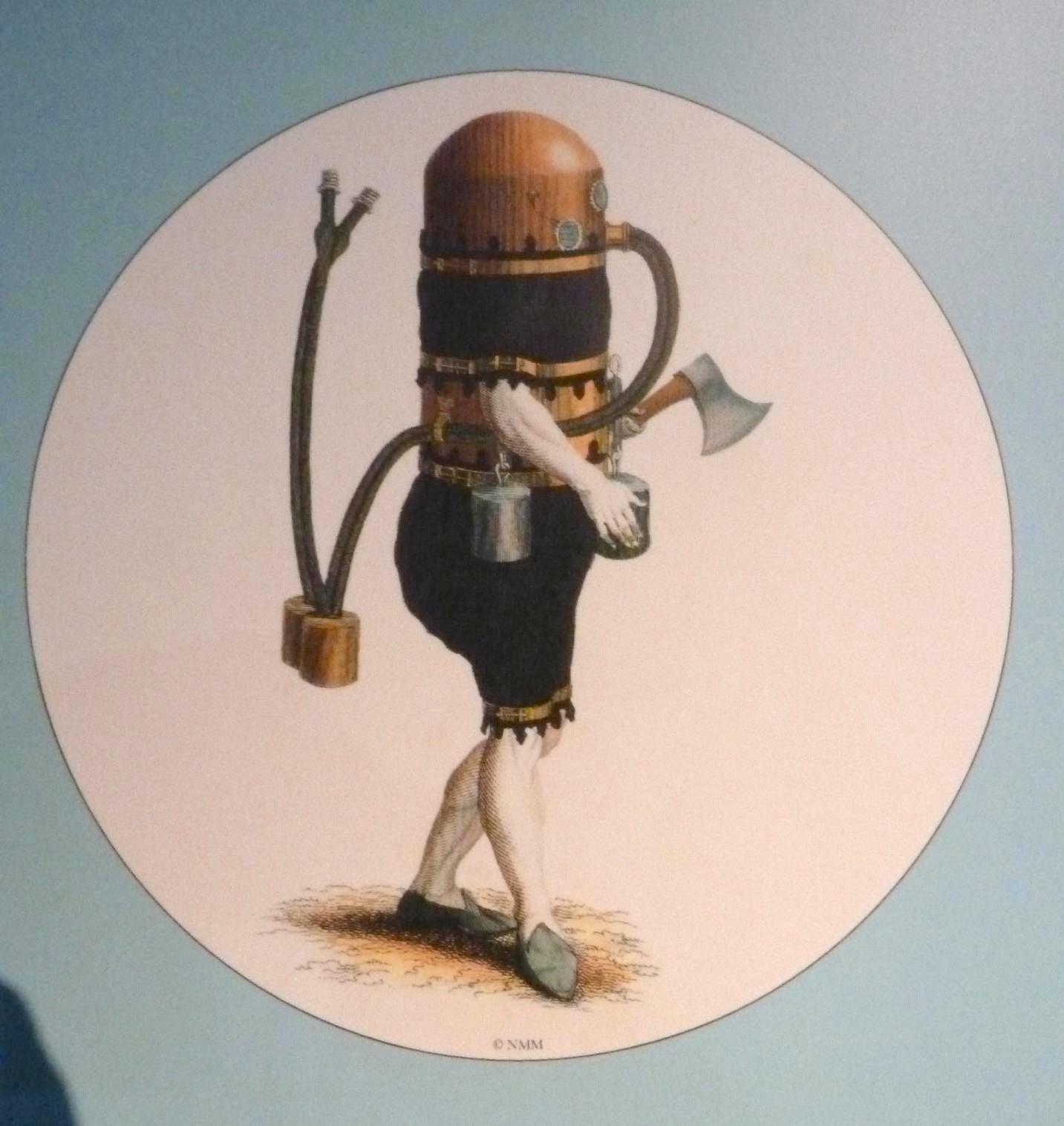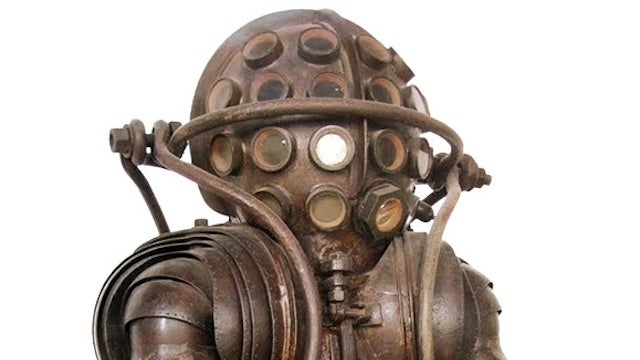
Long before we had spacesuits, we had diving suits. The ocean was the first hostile environment that we sent people into, completely covered with protective gear. And the suits that people created with late-18th century or 19th century technology are astonighing to behold. See for yourself!
The first known diving helmet by Edmond Halley, late 17th century

"A bell was sent to the bottom, and then weighted, the assistant surviving on the air trapped in the bell, and the diver, wearing another smaller "diving bell" on his head,could make his way around a bit to the extent of the tube which would draw on the air in the bell. The two would be resupplied with air in weight barrels sent down from topside, to be retrieved by the diver and lugged over to the bell." – according to Ptak Science Books.
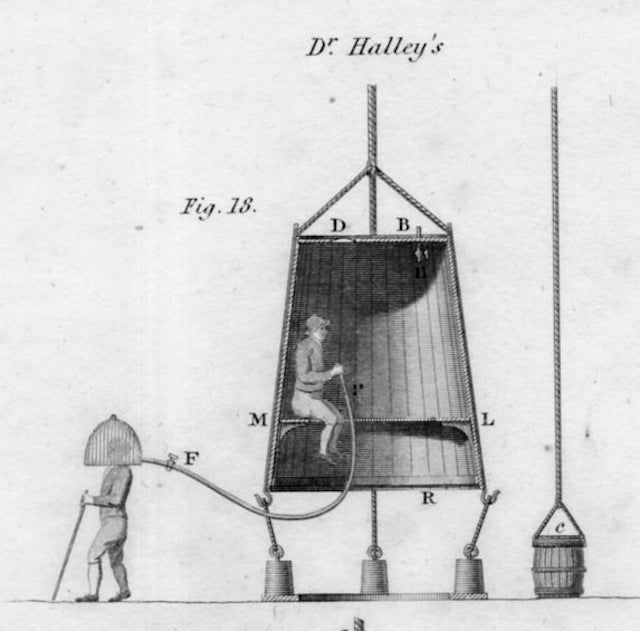
(via History of Diving Museum and Ptak Science Books)
A Diving dress, built by the French aristocrat Pierre Remy de Beauve, 1715
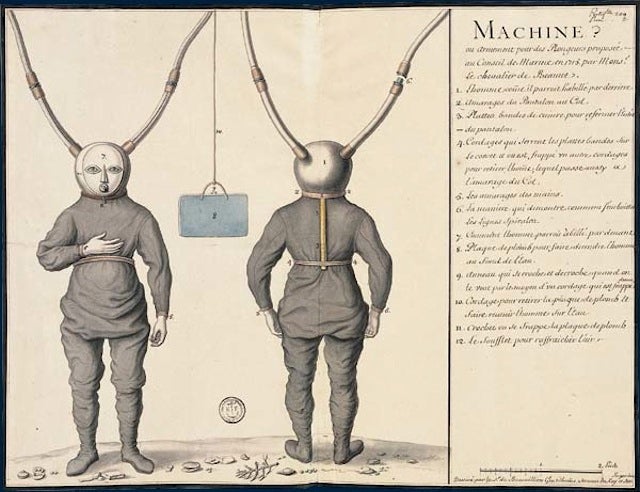
One of its two hoses supplied air from the surface via a bellows and the other one evacuated the exhaled air.
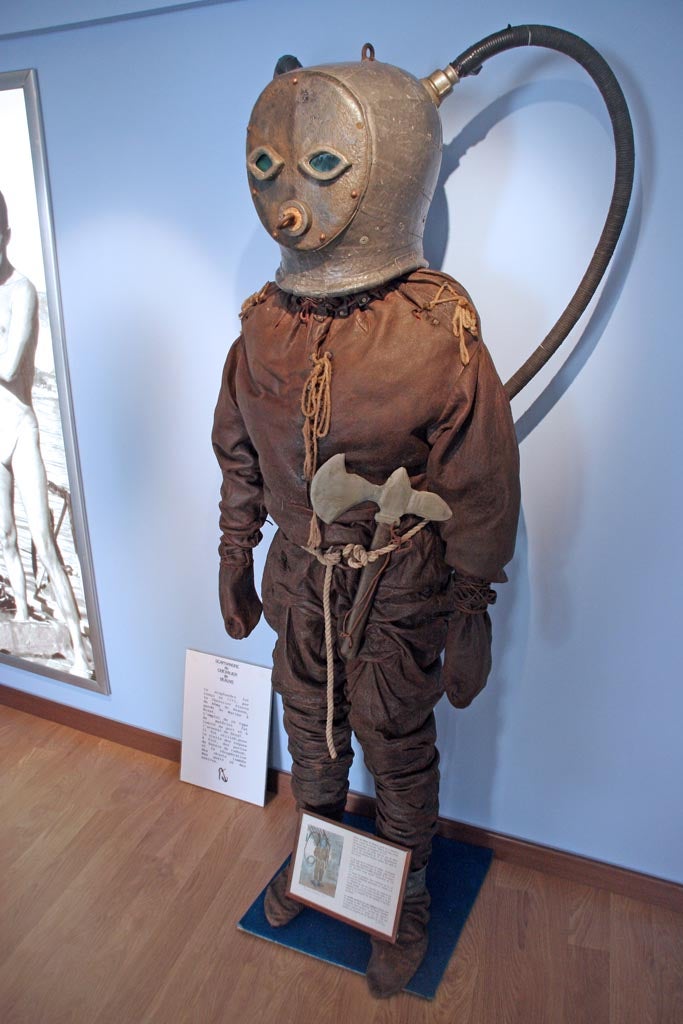
(via real-funny-lady and Musée Féderic Dumas Sanary sur Mer)
The Lethbridge diving machine by John Lethbridge, 1715
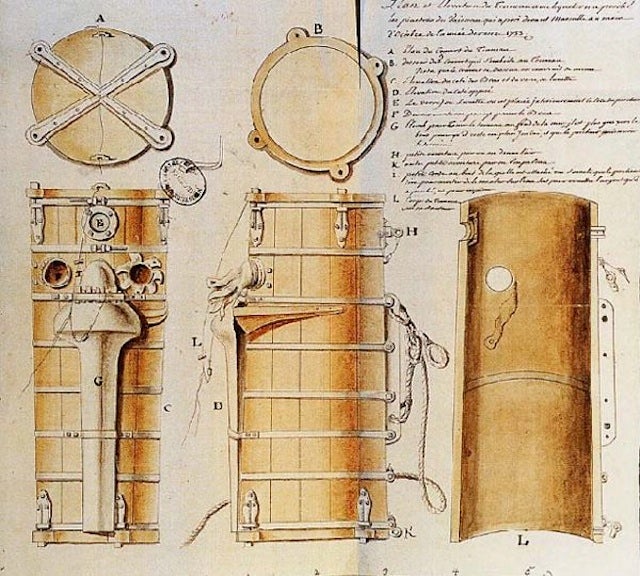
This airtight oak barrel was used to salvage valuables from wrecks. Another Englishman, Andrew Becker, developed a similar system in the same year, but that suit had a system of tubes for inhaling and exhaling, too.
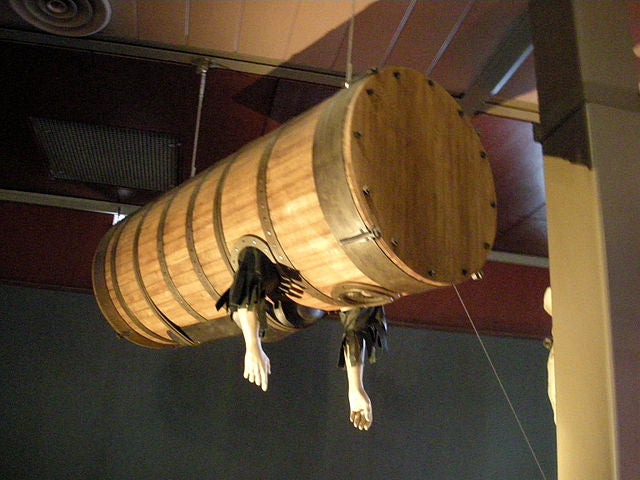
(via The Breather Site and Ji-Elle)
The Diving Machine of Karl Heinrich Klingert, 1797
The inventor tested it in the river of his hometown, Breslau (now Wroclaw, Poland). The head of the suit was protected by a cylinder-like tin plate and the design allowed to walk on the riverbed.

"It consists of a jacket and trousers made of waterproof leather, a helmet with a porthole, and a metal front. It is linked to a turret with an air reservoir. The reservoir cannot replenish itself, so the suit has a limited dive time duration." – according to Bibliodyssey.
(via Bibliodyssey and Long Live Pitmans Shorthand)
The concept of the Chauncy Hall Suit, 1810
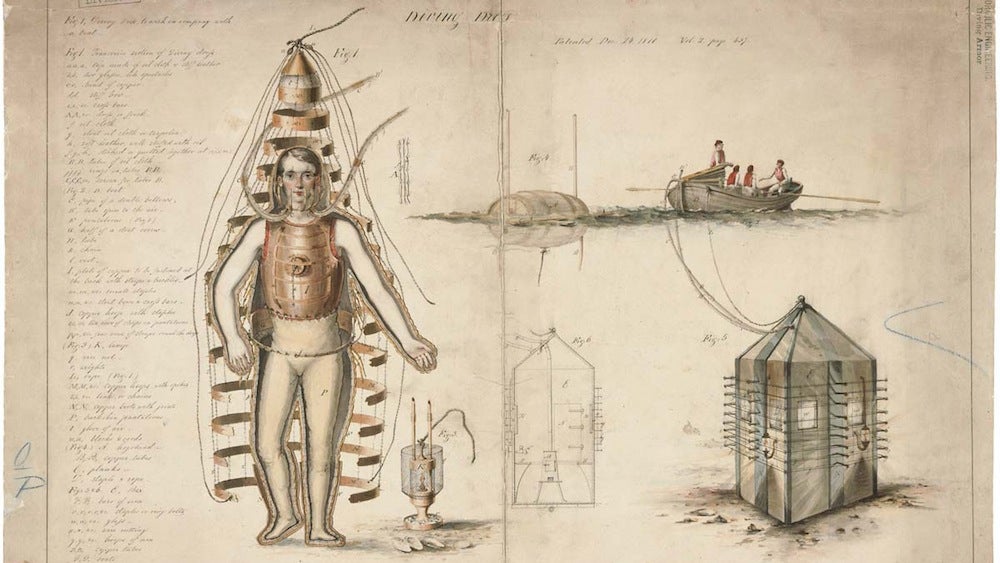
(via The National Archives)
The first suit with "heavy-footers" was made by August Siebe in Germany, 1819. A waterproof garment was added in 1837.
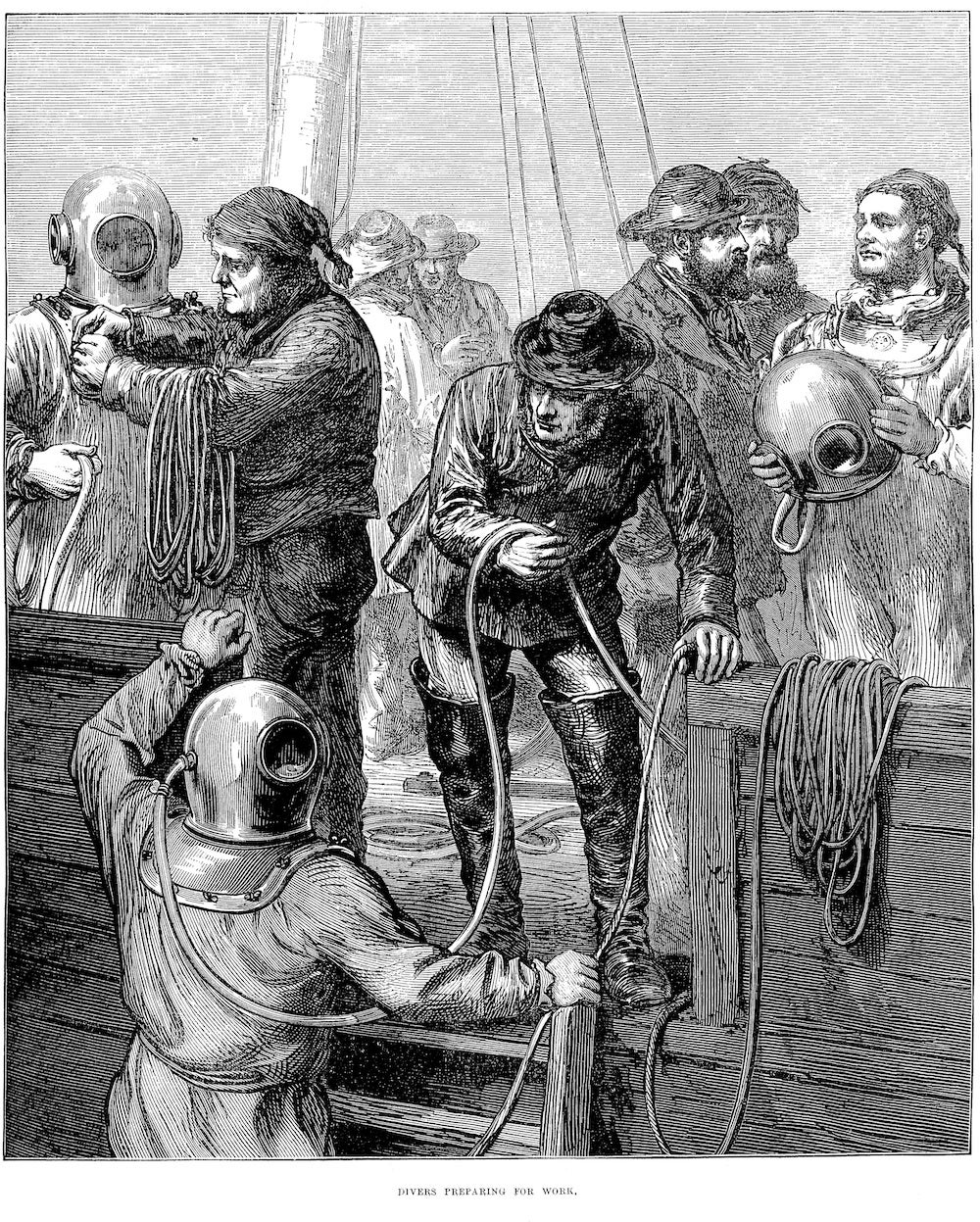
This type of helmets and equipment was used more than a century.
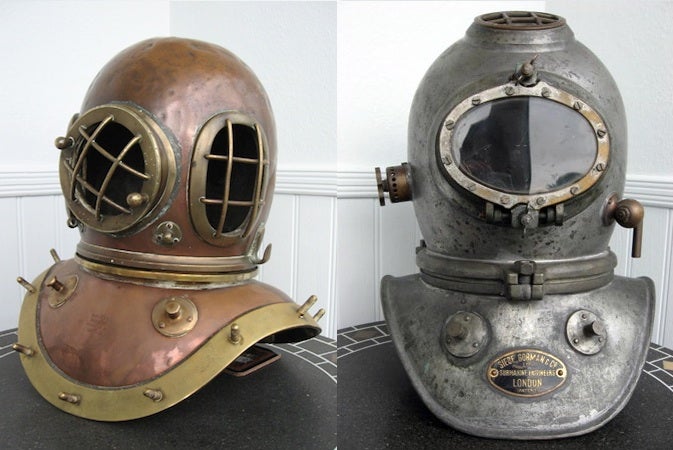
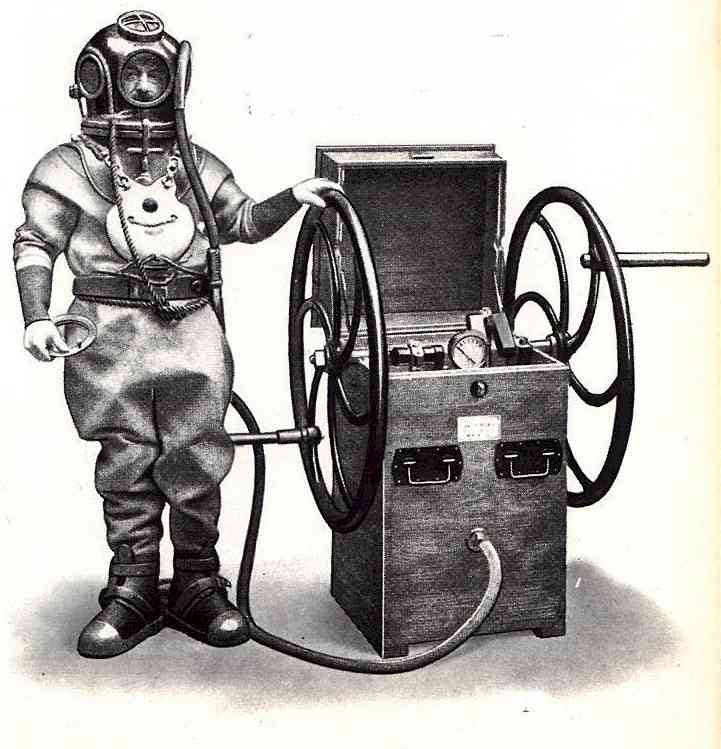
(via The Illustrated London News/Wikimedia Commons and Diving Heritage)
A suit with 20 small portholes, designed by Alphonse and Theodore Carmagnolle in Marseille, France, 1878
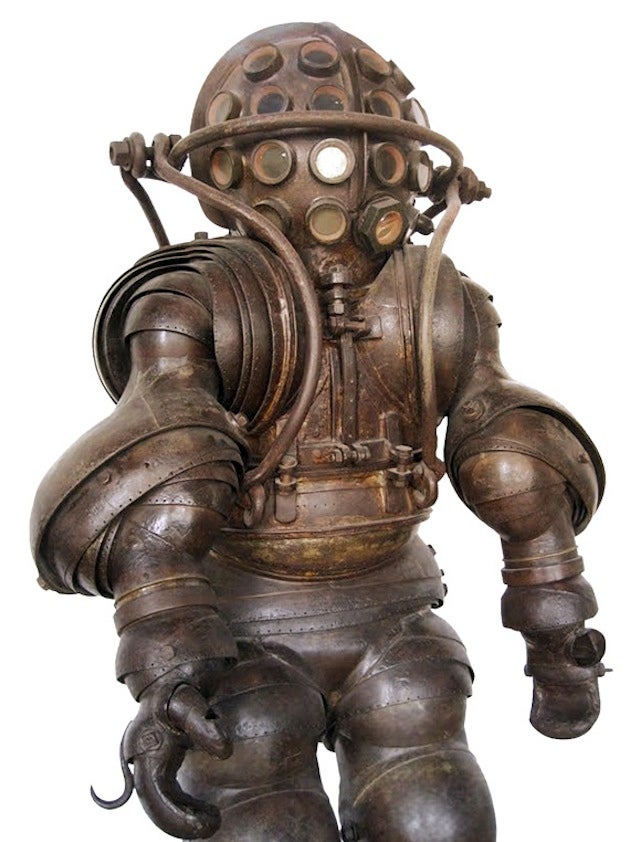

(via xerposa)
Fleuss Apparatus, 1878

The rubberized mask covered the whole face was connected via tubes to a breathing bag. It could be used as a gas mask, too.
(via History of Diving Museum)
A diver goes down to the wreck of the British schooner Cape Horn off the coast of Chile to recover a cargo of sunken copper, 1900
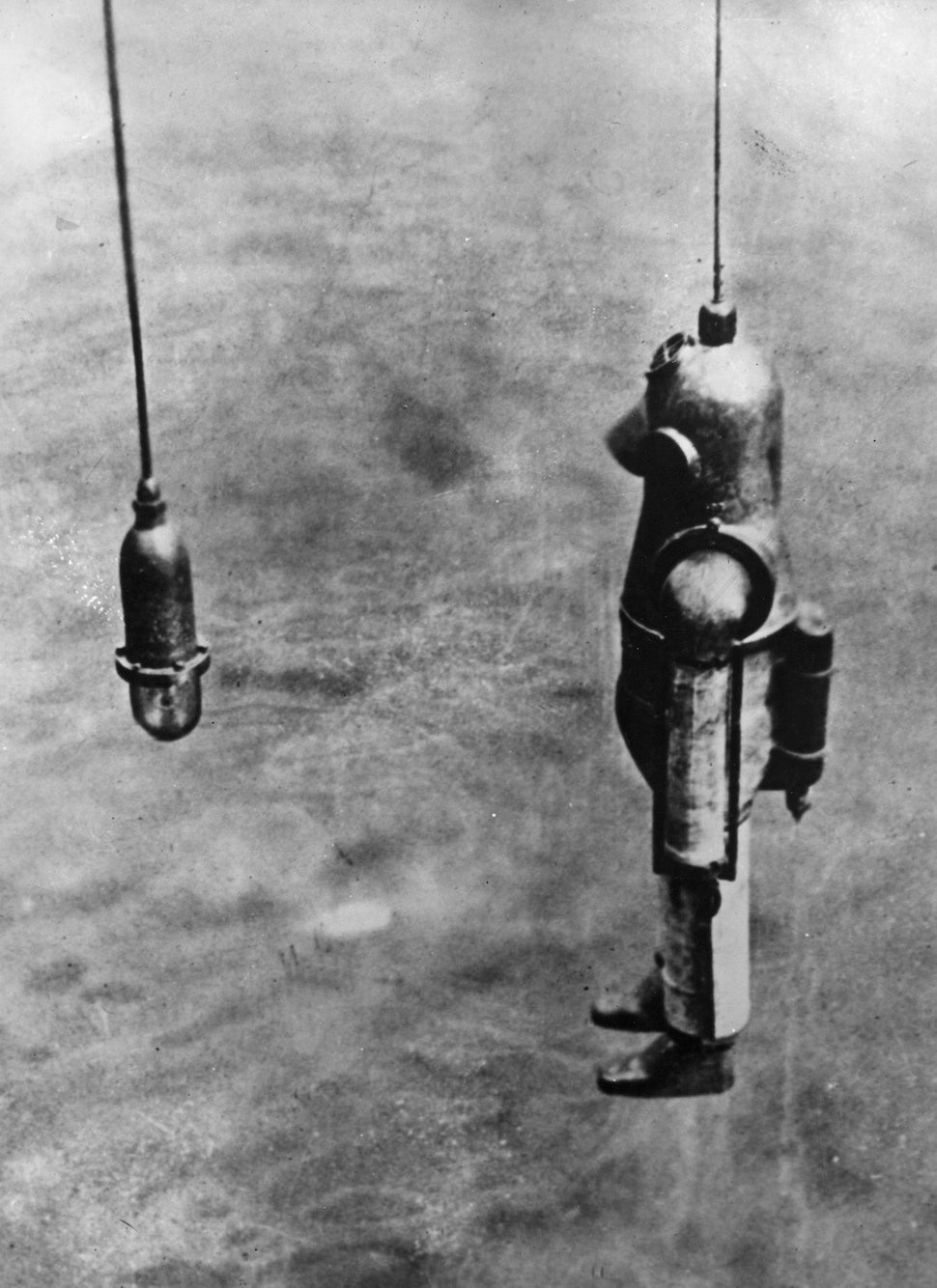
(Photo by Topical Press Agency/Getty Images)
One of the first atmospheric diving suits, by M. de Pluvy, 1906
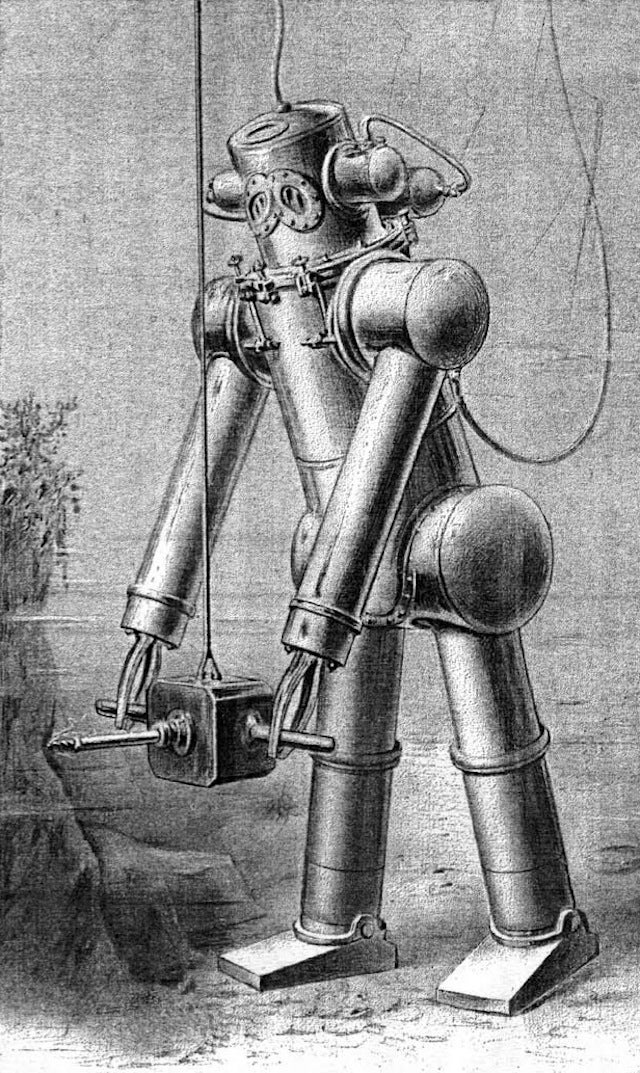
(via HDSItalia)
The 550 lbs. aluminum alloy suit, by Chester E. Macduffee, 1911
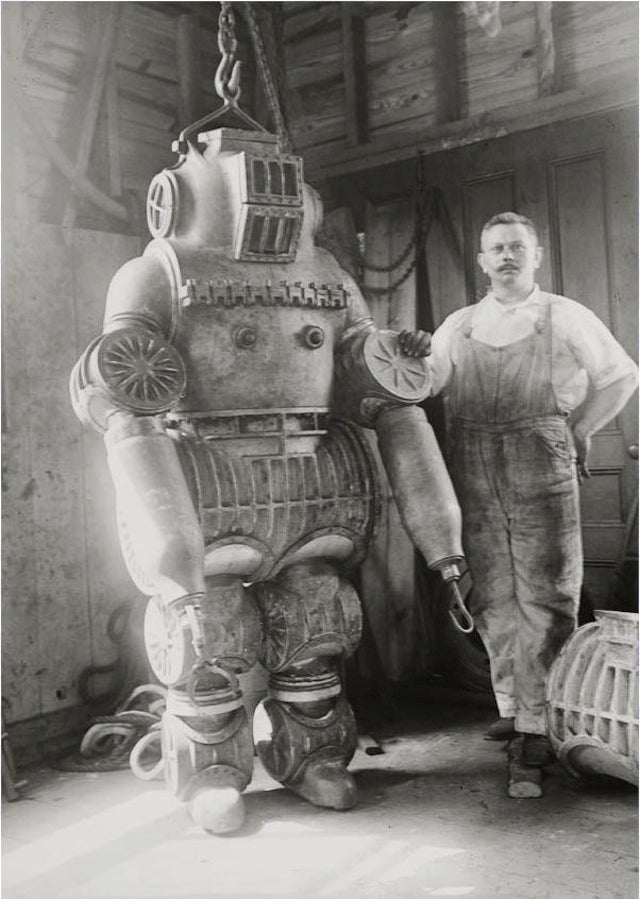
(via Reddit)
Three generations of Neufeldt-Kuhnke suit to work in deep waters, 1917-1940
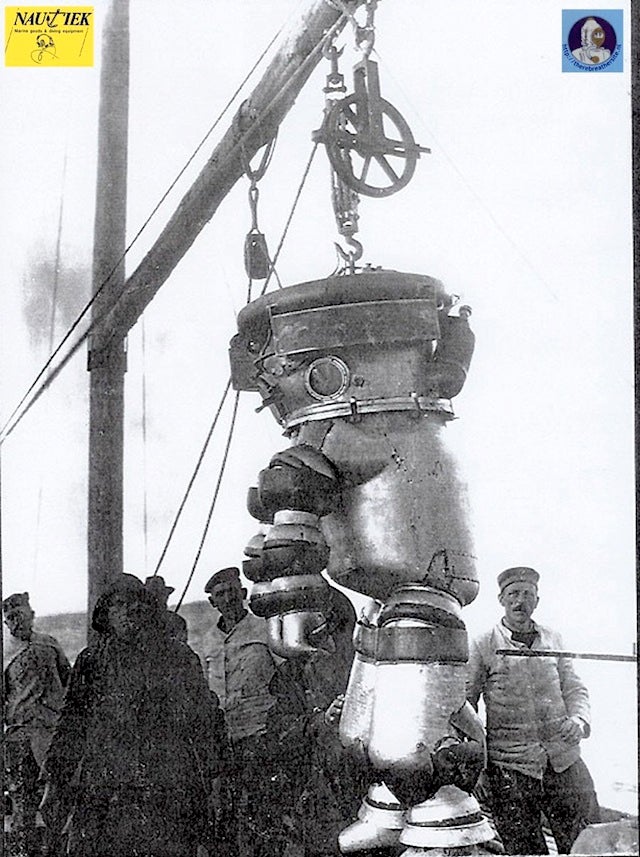
The first model (1917-1923)
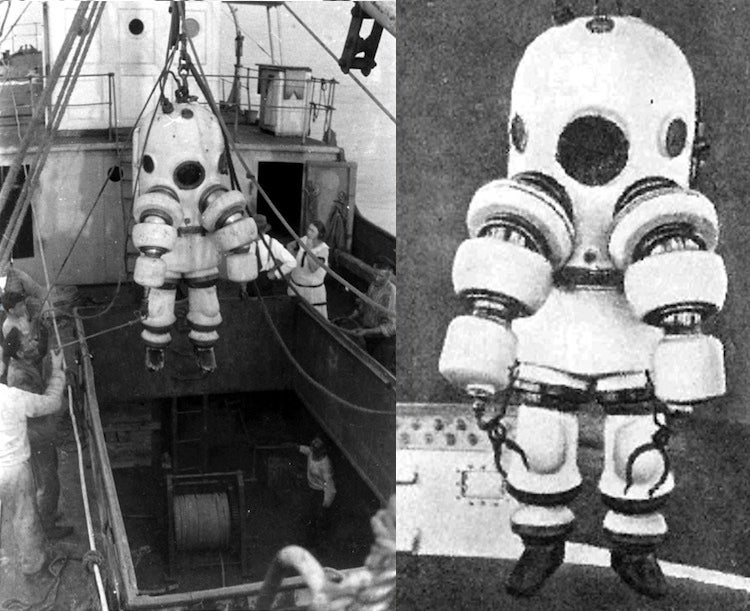
The second (1923-1929)
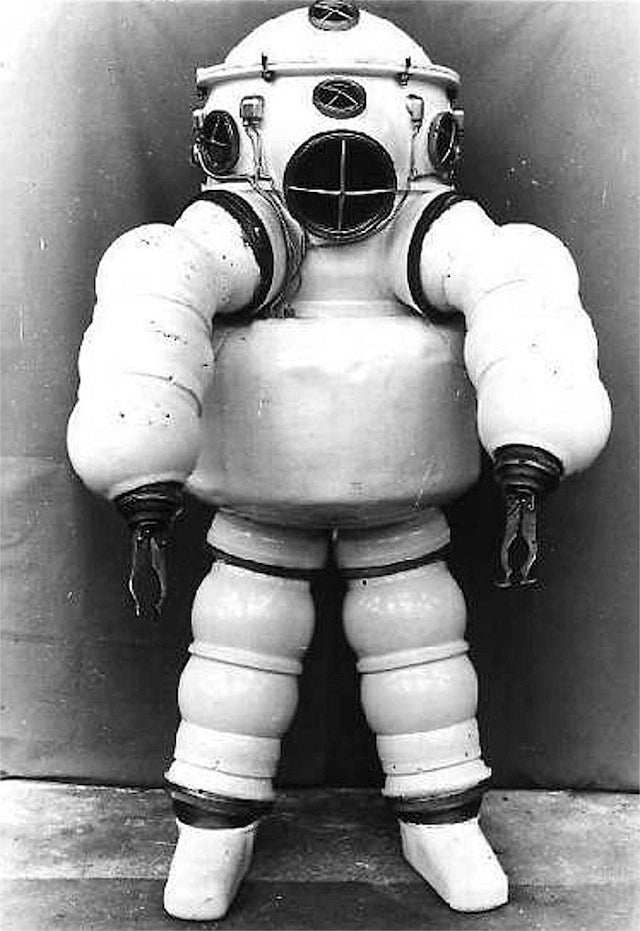
This third generation shell (produced between 1929-1940) with a closed circuit breathing system was safe up to a depth of 525 feet (160 m), and had a telephone!
(via The Breather Site)
Mr. Peress with his new steel suit, made of Staybrite Silver Steel, at the Olmypia, London, 1925
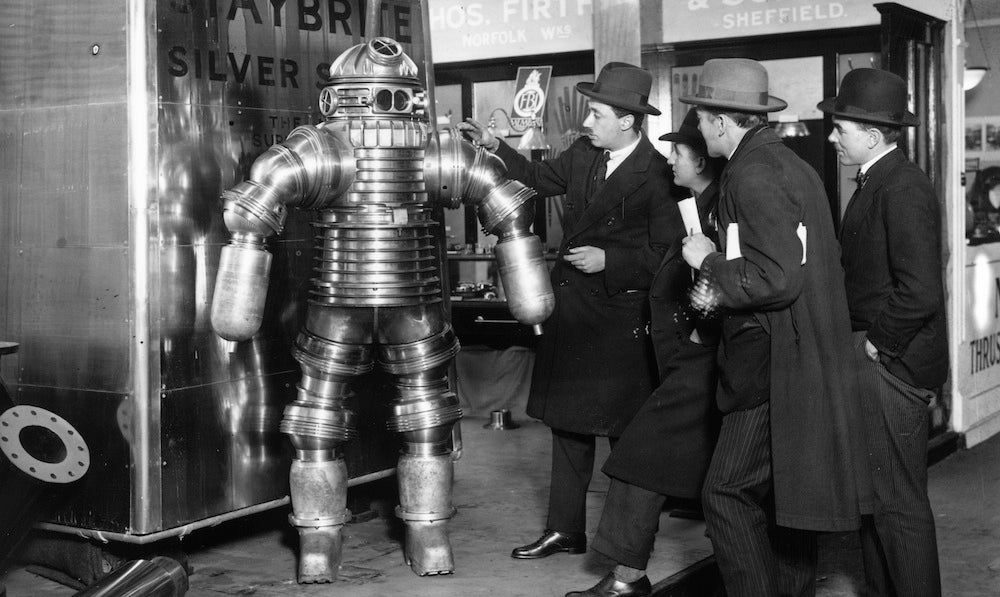
(Photo by E. Bacon/Topical Press Agency/Getty Images)
An instructor checks on a student lying in a decompression chamber during a class at the Gillingham Diving School, Kent, England, 1930
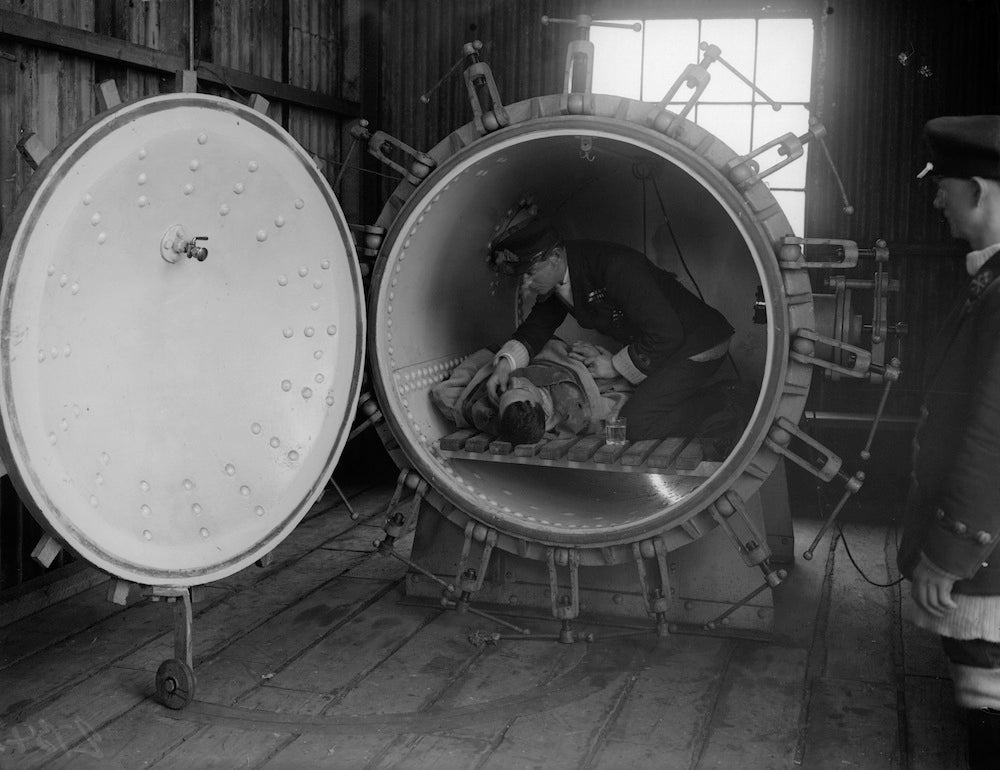
(Photo by Fox Photos/Getty Images)
How to build a Diving Helmet from an unused Water Heater, 1932
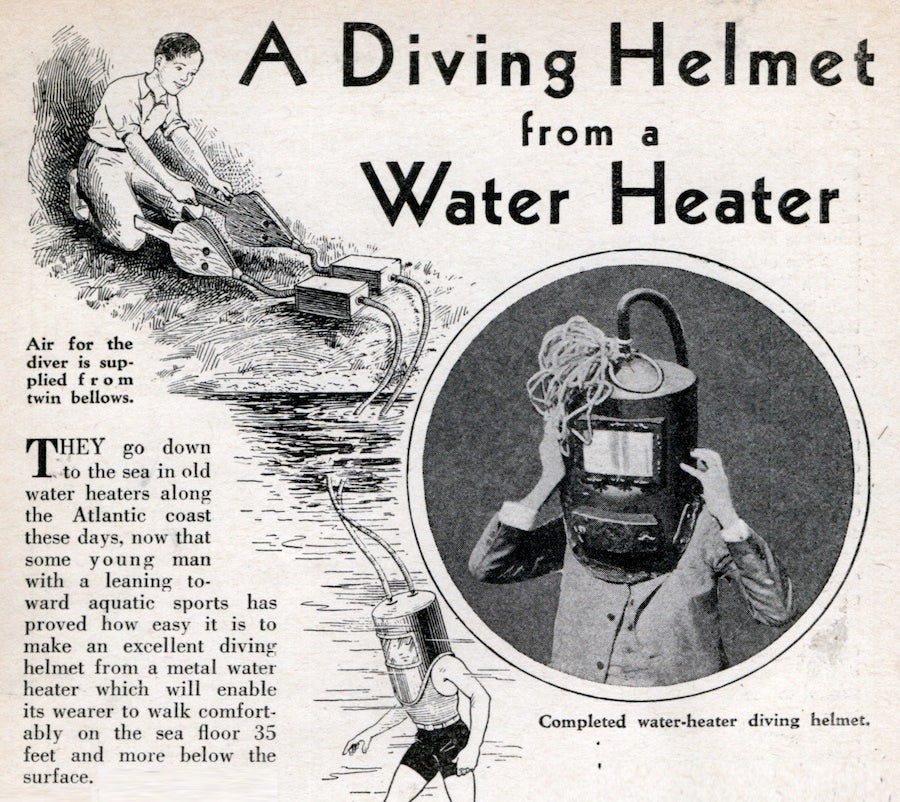
The whole article is available here with all the instructions to build your own helmet. But if you only have a cookie jar, just relax, here's some help on how to make it work:
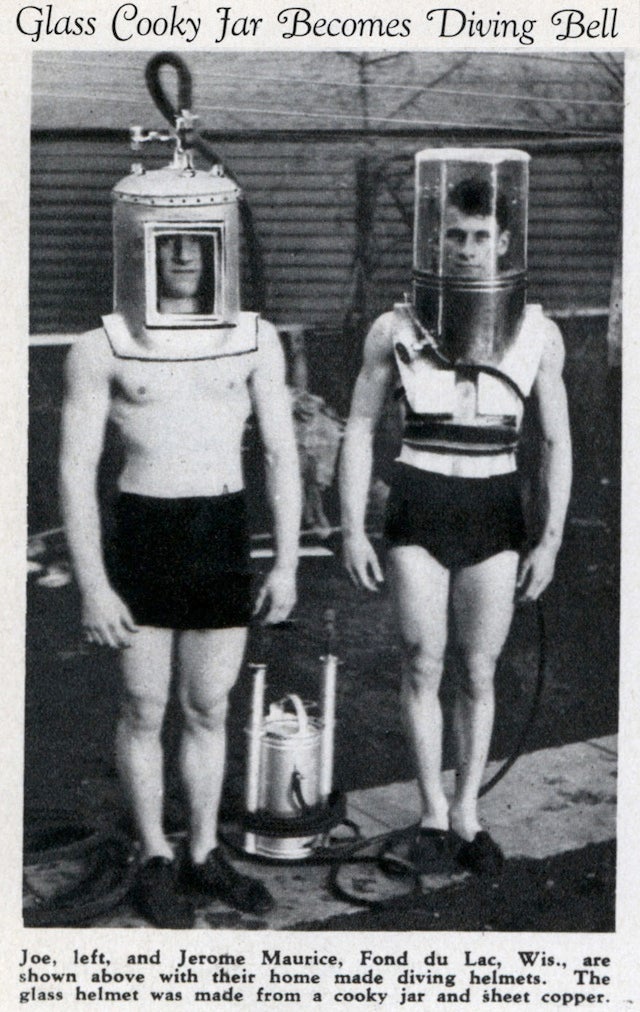
(via Modern Mechanix – 1 and 2)
An Inflatable Suit
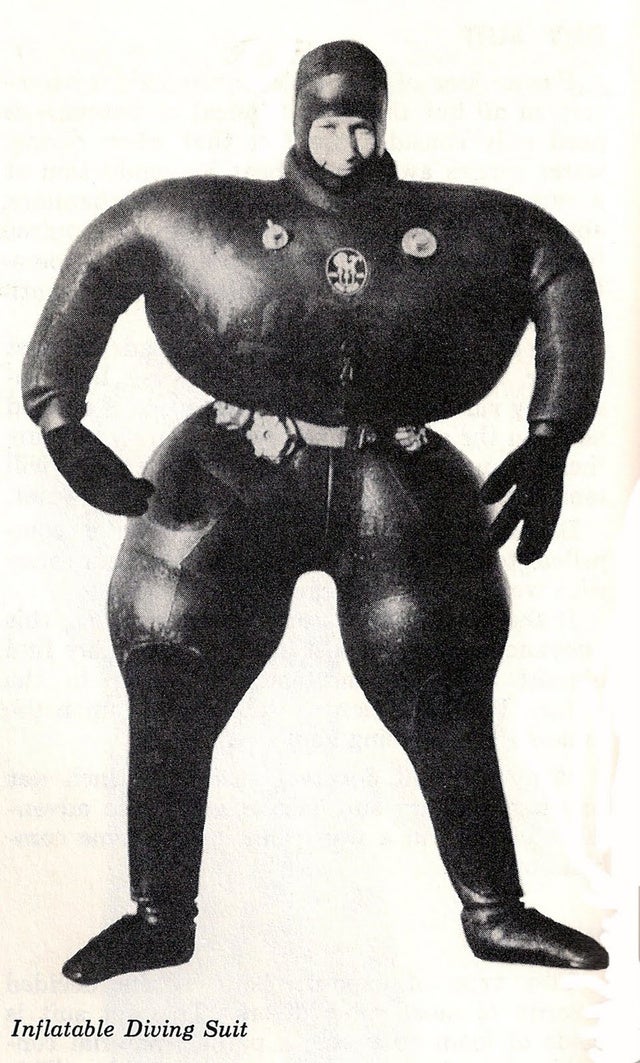
(via tskcity)
1-Man Sub, 1933

(via Modern Mechanix, 1933)
Diving Suits Used to Raise Mastodon Bones, 1933
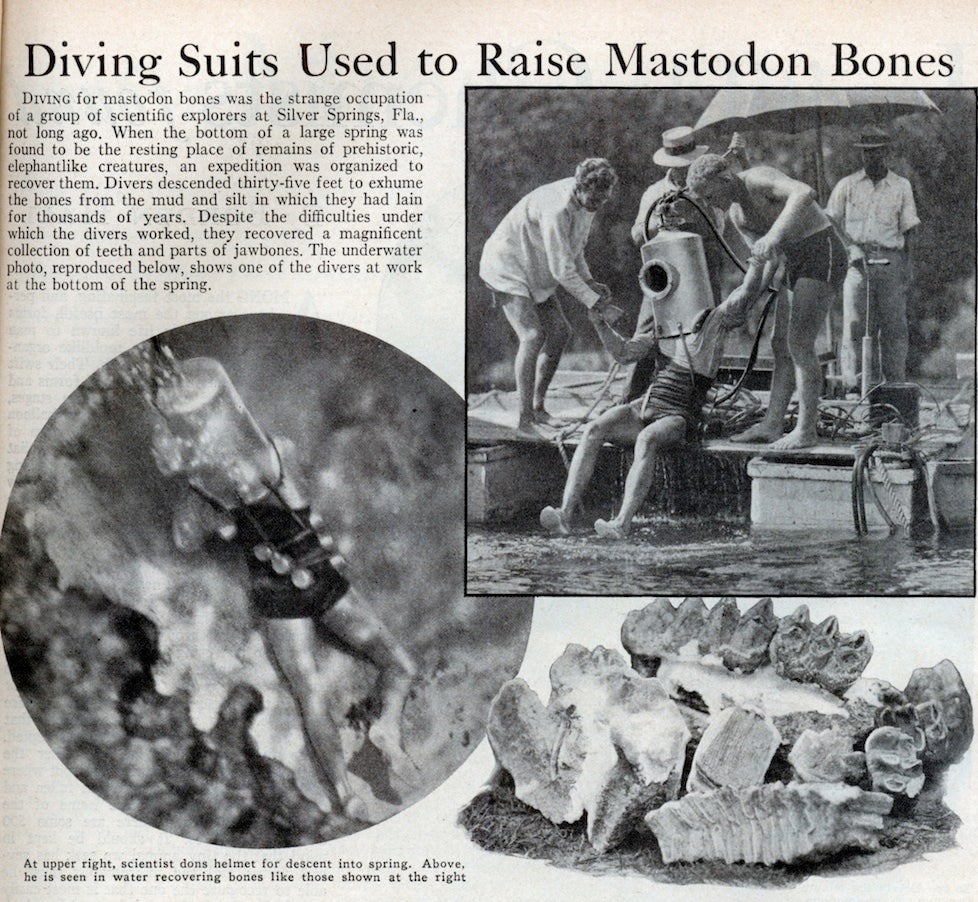
(via Popular Science, October 1933)
Metal Suit, said to enable a diver to descend to a depth of 1,200 feet, 1938
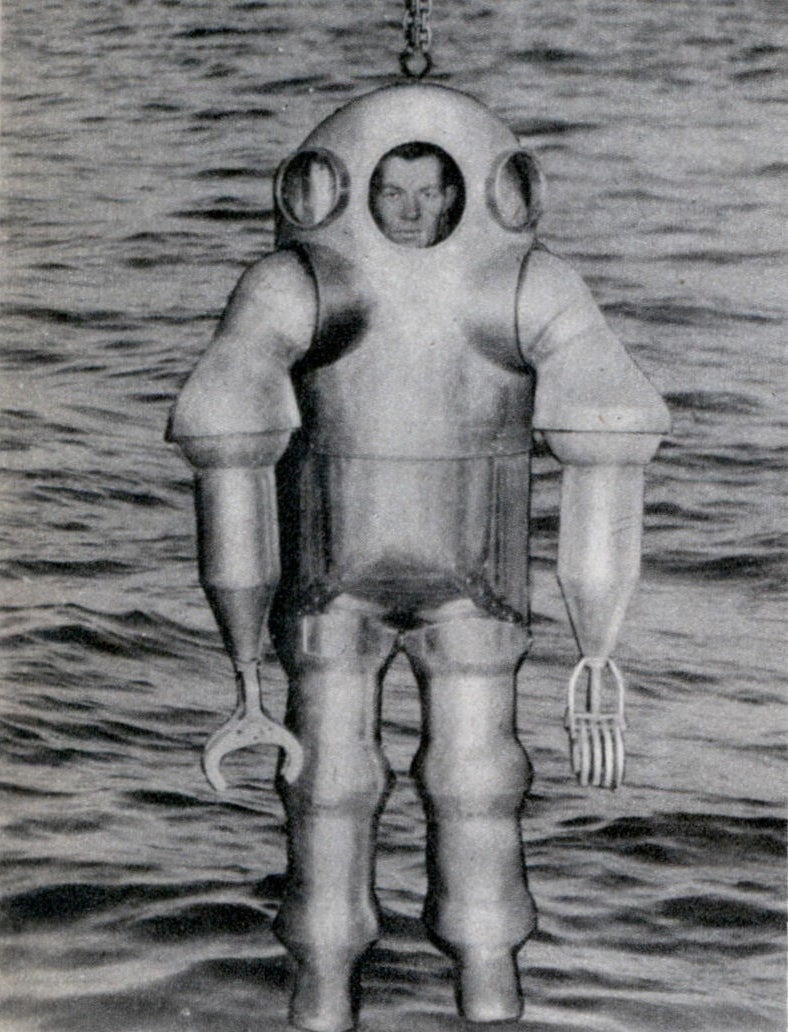

(via Mechanix Illustrated, 1938)
The first true automatic autonomous diving suit with pressure regulator and compressed air bottles, the Cousteau-Gagnan diving suit, 1943

Marketed since 1946.
(via delcampe)
An atmospheric diving suit which enables a diver to work for unlimited periods at a depth of 1,000 ft (300 m) without the need for a long decompression process, 1974

(Photo by Central Press/Getty Images)
Bonus: A woman with a person in deep sea diving gear, c. 1880
